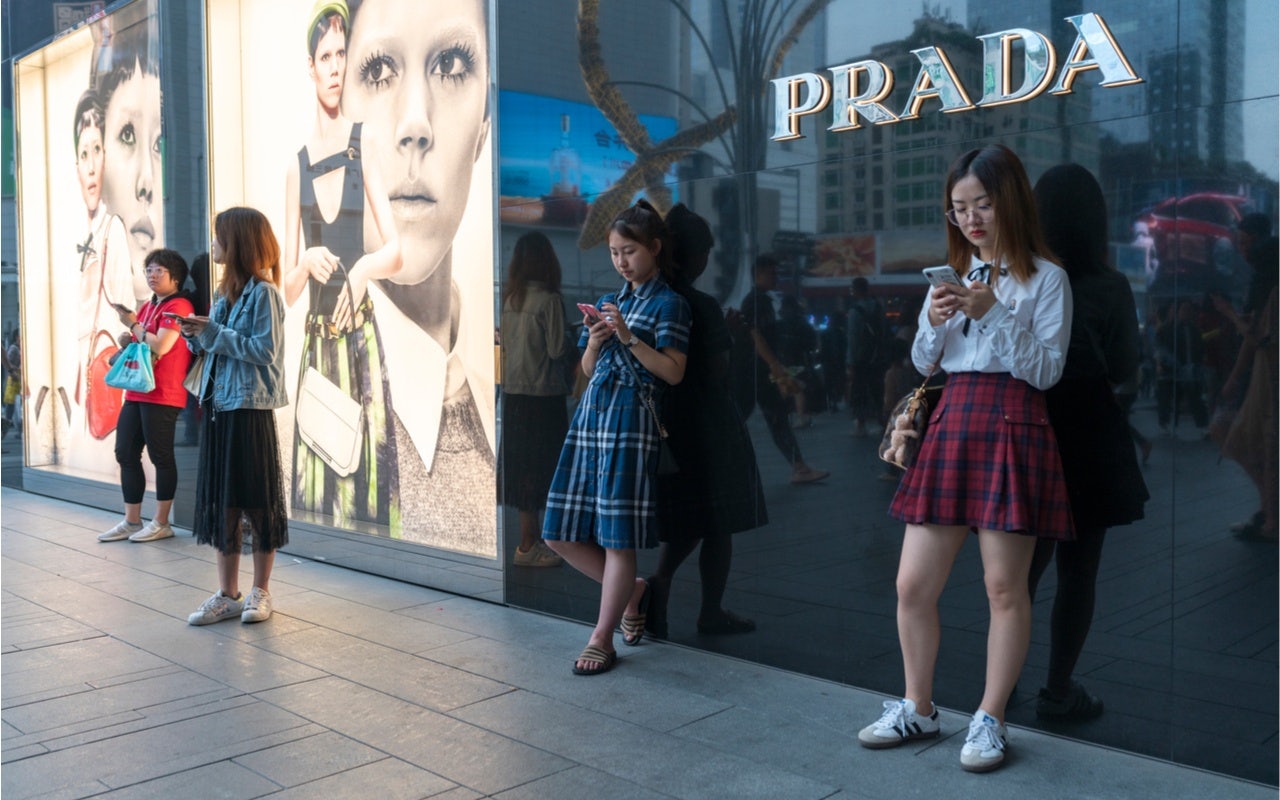While luxury rivals like LVMH and Kering celebrate optimistic financials in the first half of 2019, with LVMH recording a 12 percent increase in overall organic growth year-over-year and Kering revenue leaping nearly 19 percent in the same period, last week Prada’s financial announcement indicated that storm clouds are approaching for the brand, particularly in the crucial Greater China region.
In the first half of the year, Prada sales dropped 2 percent in Greater China, which the company seemed to prepare the market for much earlier in the year with warnings in March that Chinese tourist-shoppers were spending less in Hong Kong and Macau. This in itself should not have been the core problem, however, since it has affected other luxury brands as well. The issue is that Chinese shoppers —who account for over 20 percent of Prada’s global sales — simply aren’t excited about buying the brand in mainland China either.
Although Prada executives are quick to go to the usual excuses, at the core of Prada’s China problem is a changing young customer who simply doesn’t connect with the brand or its latest collections.
Not that Prada has ignored its stagnating status in China — earlier this year, the brand announced Chinese singer and actor Cai Xukun as its new Chinese brand spokesperson. This announcement came in advance of Prada’s Men’s spring 2020 fashion show in Shanghai. Also, earlier this summer, the Prada Group officially launched Prada and Miu Miu “stores” on e-commerce platform Secoo, following similar moves on JD.com.
Chatter and activity aren’t the problem. People talked about the recent Cai Xukun campaign, and the moves on Secoo and JD got plenty of press. The problem is a lack of innovation or exciting “hooks” to dig deeper into a changing Chinese market. LVMH and Kering brands also collaborate with celebrities, hold runway shows and cocktail events and rely on the typical marketing strategies. Some brands are doing fine, some are surprisingly growing, and others are doing poorly.
What Prada needs to consider is that younger customers are looking for something different in its products, not just its marketing. This isn’t unique to China. Although the company is making noise about its ongoing “turnaround,” sales are less than exciting worldwide. Led by wholesale, Prada sales did rise 7 percent in Europe, but the Americas remained flat and Asia (including China) dropped 6 percent at constant exchange rates.
What it may take to re-crack China may not be another local spokesperson or flashy ad campaign. It may take a more radical approach, akin to a rebrand or re-introduction with very different products — something along the lines of what Burberry is hoping to achieve with its new designer Riccardo Tisci, or what Gucci has seen since appointing Alessandro Michele creative director in 2015. (Although that brand is not immune to stagnation fears.)
Issues like a Chinese economic slowdown, the lingering effects of the U.S.-China trade dispute, and ongoing Hong Kong protests will impact sales for all brands in Greater China this year in one way or another, but one issue that is also unavoidable is the changing tastes of younger Chinese customers.
They’re bombarded with brand ambassadors and influencers, no differently than their counterparts in other key luxury markets, and harder to influence. Without an “it” bag or even a hard-to-get classic piece, Prada will need to try harder to drive stronger revenue through excitement — and that will have to be design-driven rather than marketing-led.

